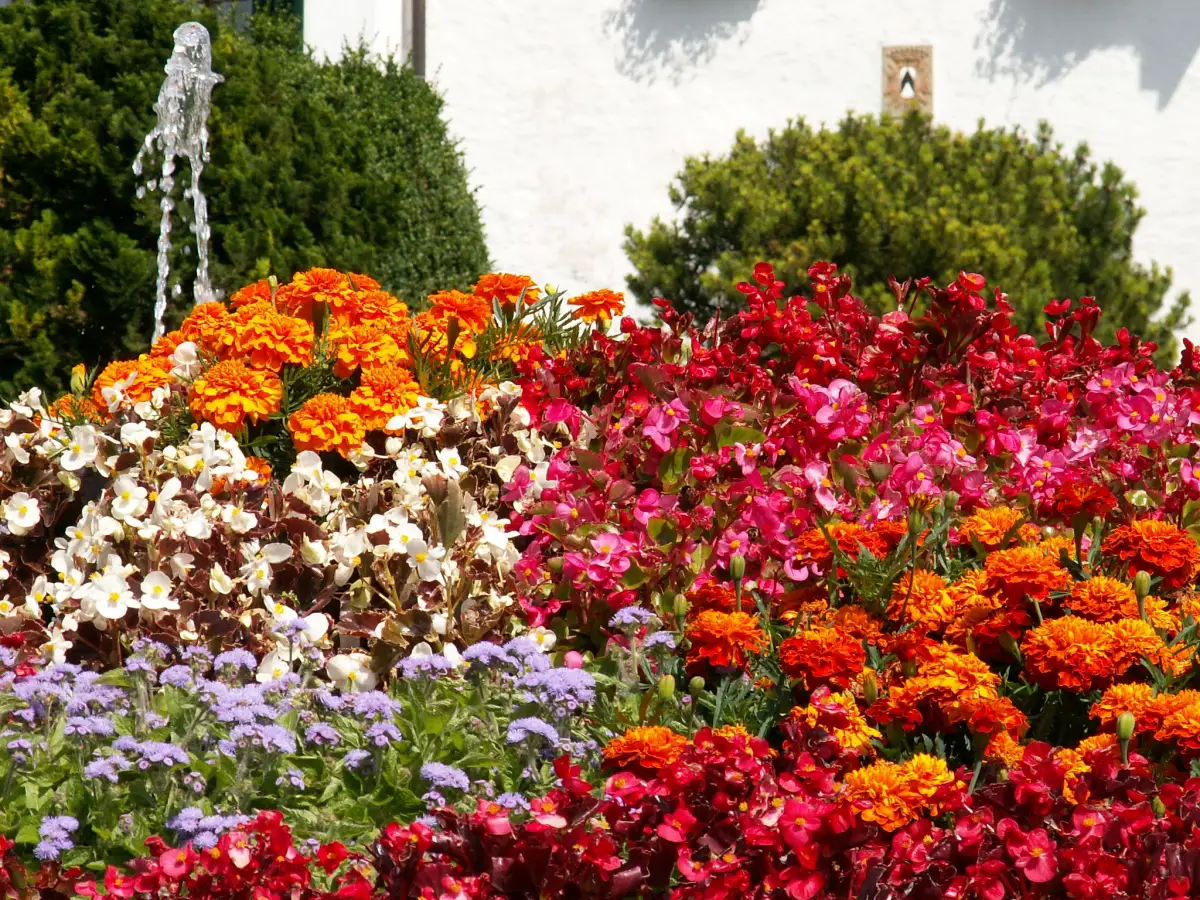
Image – Flickr / Pedro
When we visit a garden, be it a neighbor’s or our own, the first thing we look at is the colors. It is what most catches our attention because during our evolution, sight has been one of the most important senses, since it allowed us to guide ourselves through the world around us and survive.
Of course, today it is still very important, but perhaps a little less considering the advancement of technology and how it is helping blind people. But even so, when we want to design a small garden of plants in a field we have to keep the colors in mind, so let’s see how to combine colors in a garden.
Decide if you want a cute or multi-colored garden
This is the first thing to think about, bearing in mind that a monocolor garden does not have to be only a single shade of that color, but you can play with whatever it has. So, for example, if what you want is a green garden, you can put blue-green plants with others of a lighter and / or darker green color. You can even go further and put gray plants like the maritime cineraria.
Furthermore, If you choose to have a multi-colored garden, we recommend using the color wheel or chromatic circle.. It is the best guide that exists for design, and very easy to use since you only have to combine analogous colors, that is, they are next to each other, such as blue and purple, pink and red, or green and yellow. yellow.

Image – Wikipedia, the free encyclopedia
Do not forget the emotions that your garden will transmit
As each person is unique, with their own tastes and opinions, I think it is very important to take into account the emotions that your garden will convey. And it is that, for example, one in which green has been used and its tones will not transmit the same as one in which there is a great variety of colors. Because, Let’s see what meaning and / or what inspire the colors most used in gardening:
- Yellow: optimism, energy, vitality.
- Blue: calm, health and seriousness.
- Blanco: peace, perfection and goodness.
- Purple: mystery, elegance and luxury.
- Orange: trust, warmth and friendship.
- Rose: delicacy, sensitivity, sweetness.
- Red color:: passion, energy and strength.
- Green: nature, freshness, hope.
How to use muted, bright and neutral colors?

Image – Wikimedia / Basile Morin
But in addition to being classified according to the emotions they convey, the colors are also divided into muted, bright and neutral. The first ones are green, grayish blue, or dark pink, and they are those that are most used to create a calm and relaxed atmosphere.which is why they are ideal for relaxation areas in the garden. They are also very interesting to make it look bigger than it really is.
The bright ones, on the other hand, are yellows, reds and oranges. These are much more eye-catching, so much so that they can make the garden look smaller than it is. Why? Because they stand out more than the others even though they are far away. For example, a lemon pine, which has yellowish-green leaves, will always look better than a laurel, which has dark-green leaves. If we want a garden or some area with bright colors such as the entrance to the garden or the children’s leisure area, we will have to opt for plants that stand out for the color of their leaves and / or flowers.
Furthermore, neutral colors can be used interchangeably with bright and muted colors, to create or maintain the color palette in one area. Examples of neutral colors are white, black, brown, gray or silver. They are colors that can be used as buffers between two plants with so different colors that, if they were put next to each other, they would not combine very well.
Ideas to design colored gardens
To finish, we want to show you a series of images of gardens and / or corners of these, both mono and multicolored. We also recommend paying attention to your emotions, since as they say, the heart does not deceive, and in the end it is they that will make you decide what type of garden you are going to design:

This is a good example of a design where muted colors predominate, but where plants with lots of colored flowers have been included to break up the color dynamics a bit for a few weeks out of the year. This design is perfect for those looking to relax in the garden, and enjoy it to the fullest during spring and summer.

In an entrance it is very interesting to put plants in a color other than the classic green, or to make combinations as the owners of the garden have done that you can see in the image above. Rose bushes, heucheras, Indian cane, bulbous plants, … In your imagination is the limit.

Monochrome gardens do not have to be boring or ugly, on the contrary. They are the best places to disconnect, since you can also play with textures and smells, putting for example aromatic plants such as lavender or citronella, dwarf conifers, or carpets.

Green is a color that was used a lot in the past. It is very present in classical gardens around the world, especially in those of Europe, a continent where, due to climatic conditions, there is not as much variety of colored plants as in the tropics. Whether combining different shades of green or using the same, it can look magnificent.
And you, do you already know how to combine colors in your garden?

One thought on “How to combine colors in a garden?”